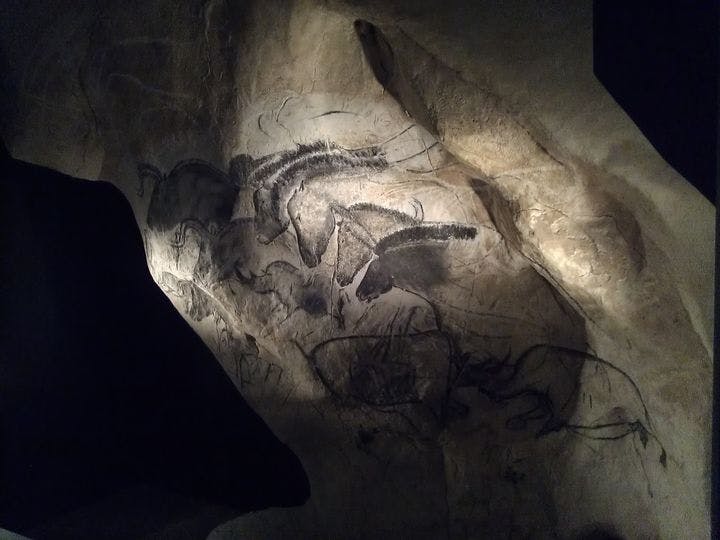Spring 2009
Survival Art
– The Wilson Quarterly
A stream of archaeological discoveries is dramatically pushing back the dates of objects that were surely shaped by the hand of early man.
Engraved ocher chips found in South Africa’s Blombos Cave in recent years feature what could be triangles, waves, fans, or maybe just fancy crosshatchings that are dated to between 77,000 and 100,000 years ago. Archaeologists disagree on whether they are art.
But a continual stream of discoveries is dramatically pushing back the dates of objects that were surely shaped by the hand of early man. There was room for doubt about whether the Venuses of Tan-Tan and Berekhat Ram, discovered in Morocco and in the Golan Heights and dated to 250,000 to 500,000 years ago, were fertility symbols or simply unusually weathered or chipped stone. But the newly discovered chunks of red ocher from Blombos were clearly left by a humanlike hand. They may not be art, but archaeologists are quite sure they are symbols, the creation of which requires the cognitive ability to communicate meaning, writes Michael Balter, author of The Goddess and the Bull (2004).
For many years, conventional archaeological wisdom held that a creative explosion occurred about 40,000 years ago when modern humans colonized Europe. British archaeologist Clive Gamble once described the evolution of symbolism as occurring so rapidly that it was like “flicking on a light switch.” Now, the increasing number of finds at Blombos and elsewhere point to a far more ancient genesis for symbolic markings. Gamble has modified his metaphor, saying that the growth of symbolism may be more like a “stuttering candle.” And it is now clear that the earliest clearly symbolic expression by humans occurred in Africa, not Europe.
Why would a few scratchings on ocher represent an evolutionary advantage over other hominid competitors in the race for survival? Many scientists say that the answer is a no-brainer, especially when it is focused on the most sophisticated form of symbolic communication—language. The ability to communicate detailed, concrete information as well as abstract concepts allowed early humans to cooperate and plan in ways unique to our species, says Balter, thus enhancing their prospects for survival during times of hardship and boosting their reproductive success in good periods.
Art and other non-linguistic forms of symbolic behavior may have been key to cementing these bonds by expressing meanings that are difficult to put into words, Balter says. Indeed, artistic expression may have helped ensure the survival of the fittest.
* * *
THE SOURCE: “On the Origin of Art and Symbolism” by Michael Balter, in Science, Feb. 6, 2009.
Photo courtesy of Wikimedia Commons
